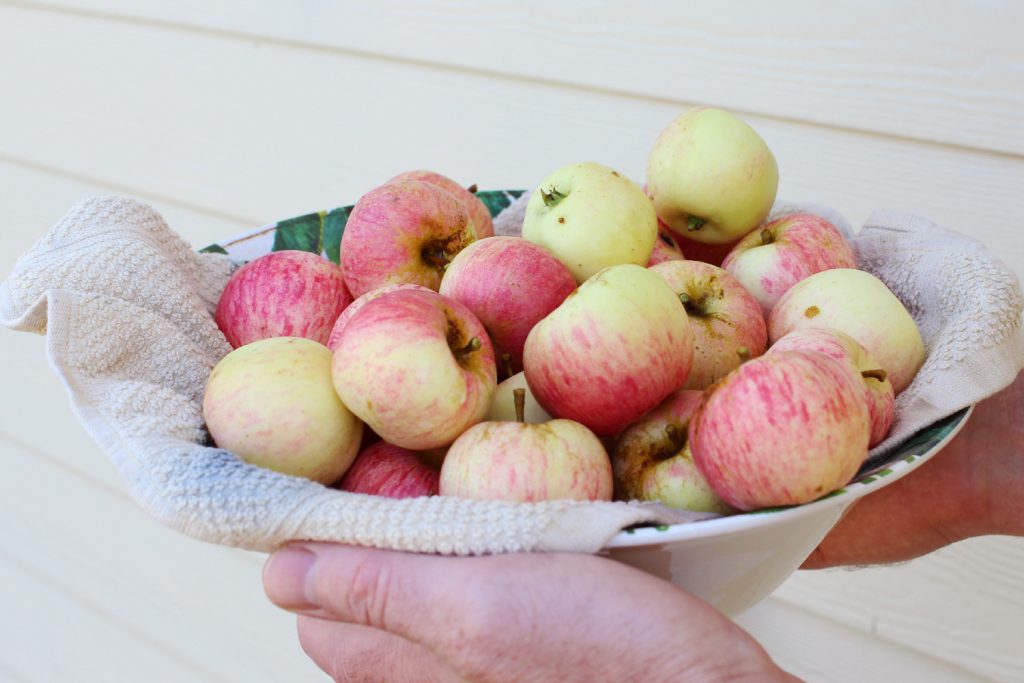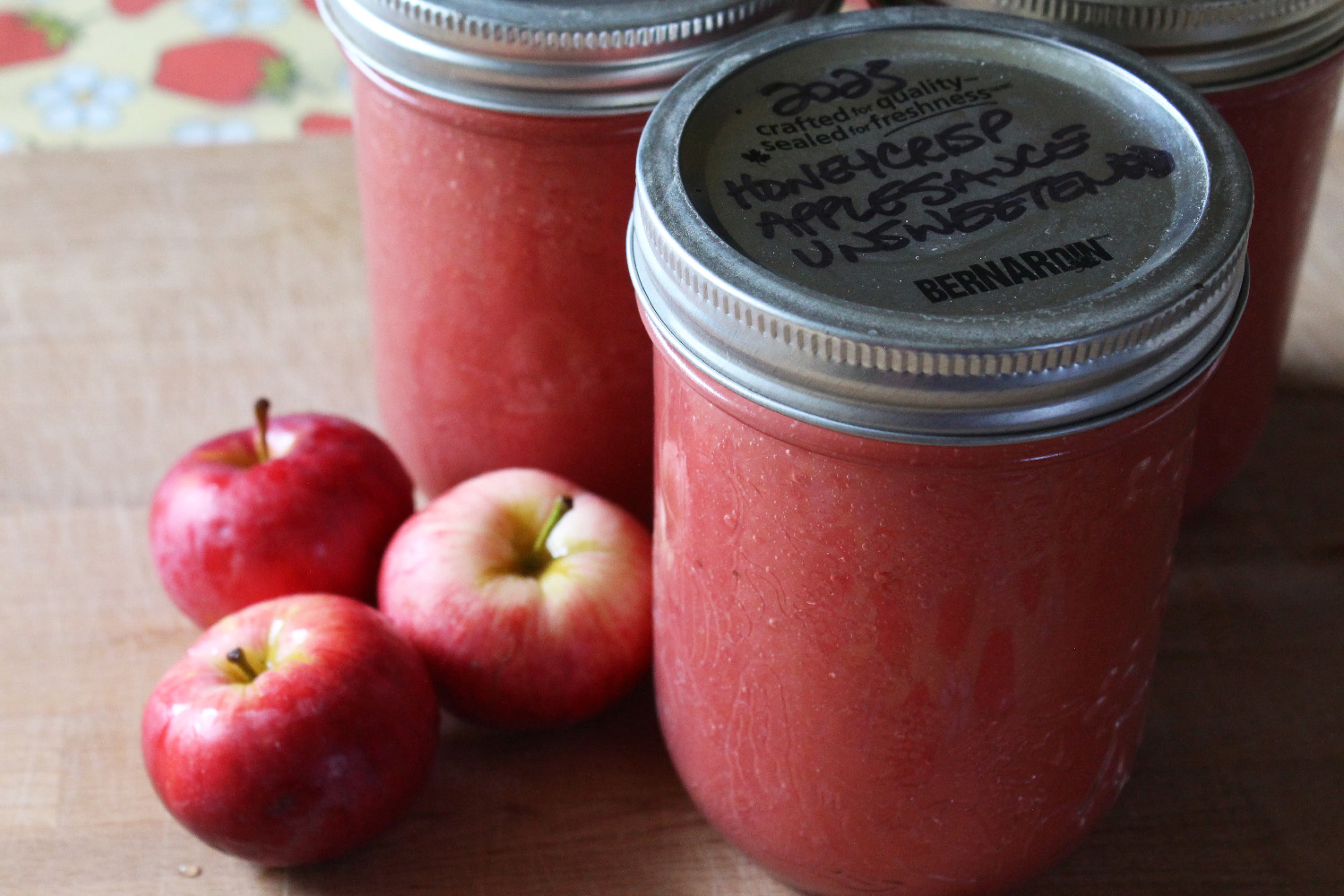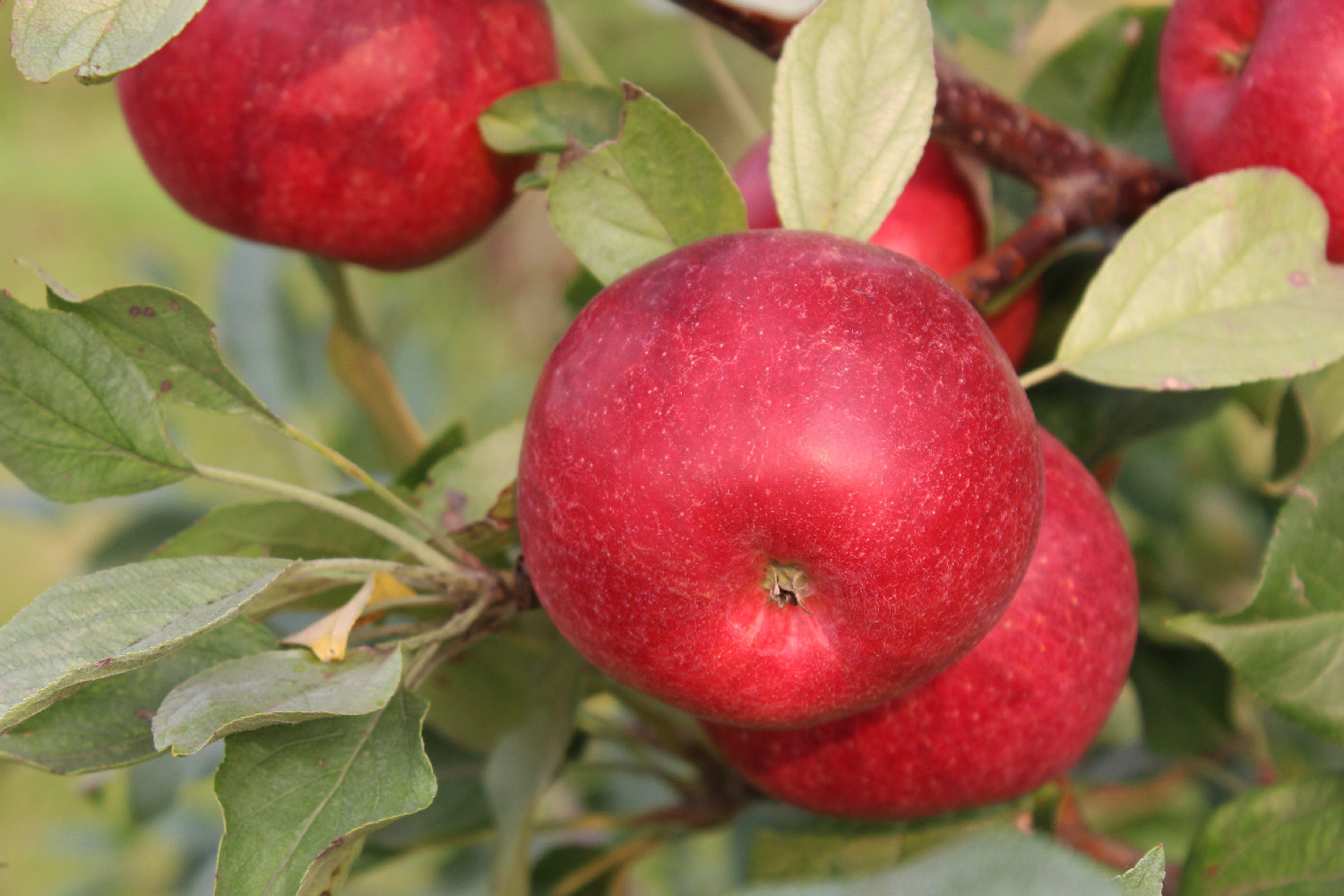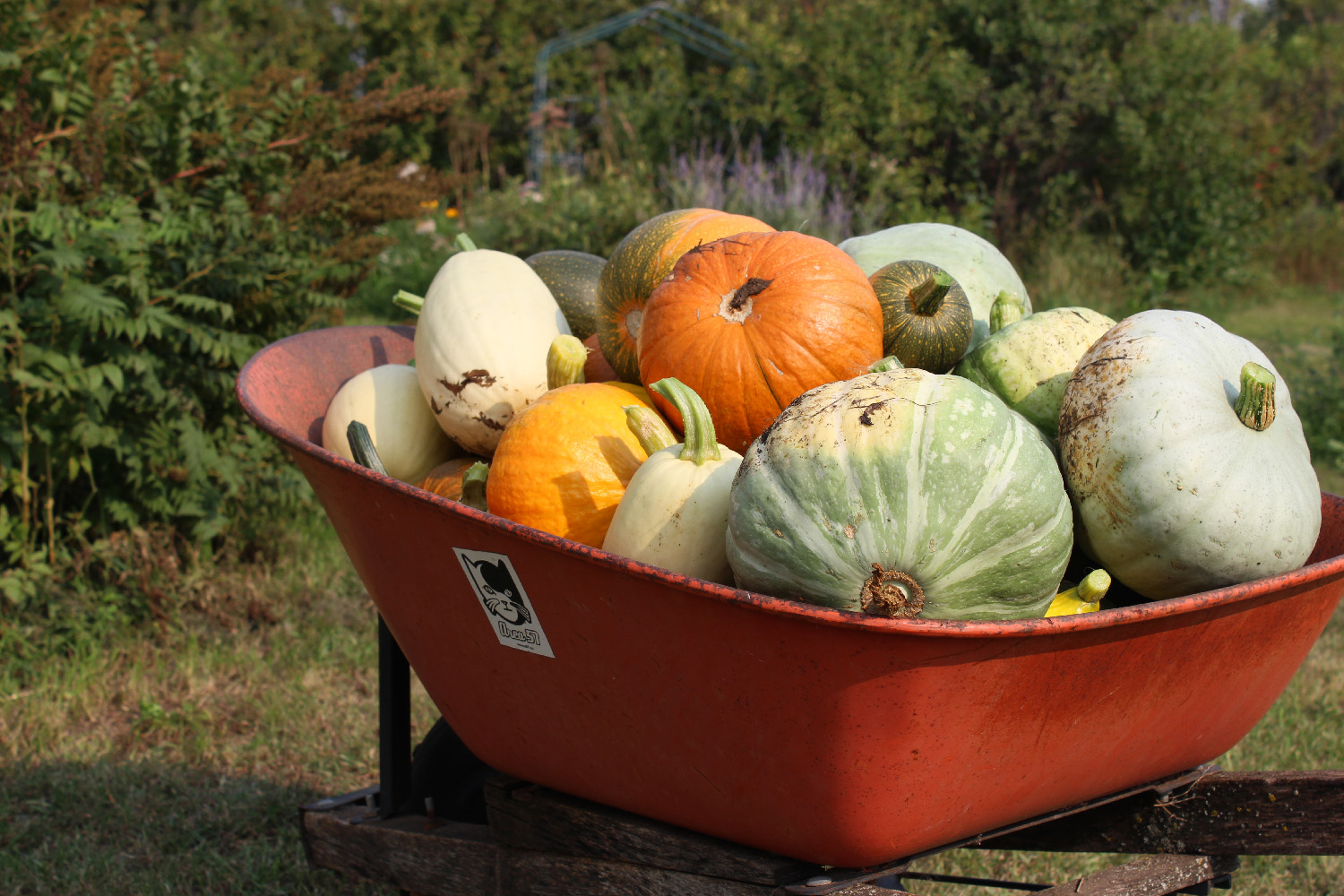The Lies We Tell Ourselves
August 26, 2023 | Orchard | 2 Comments
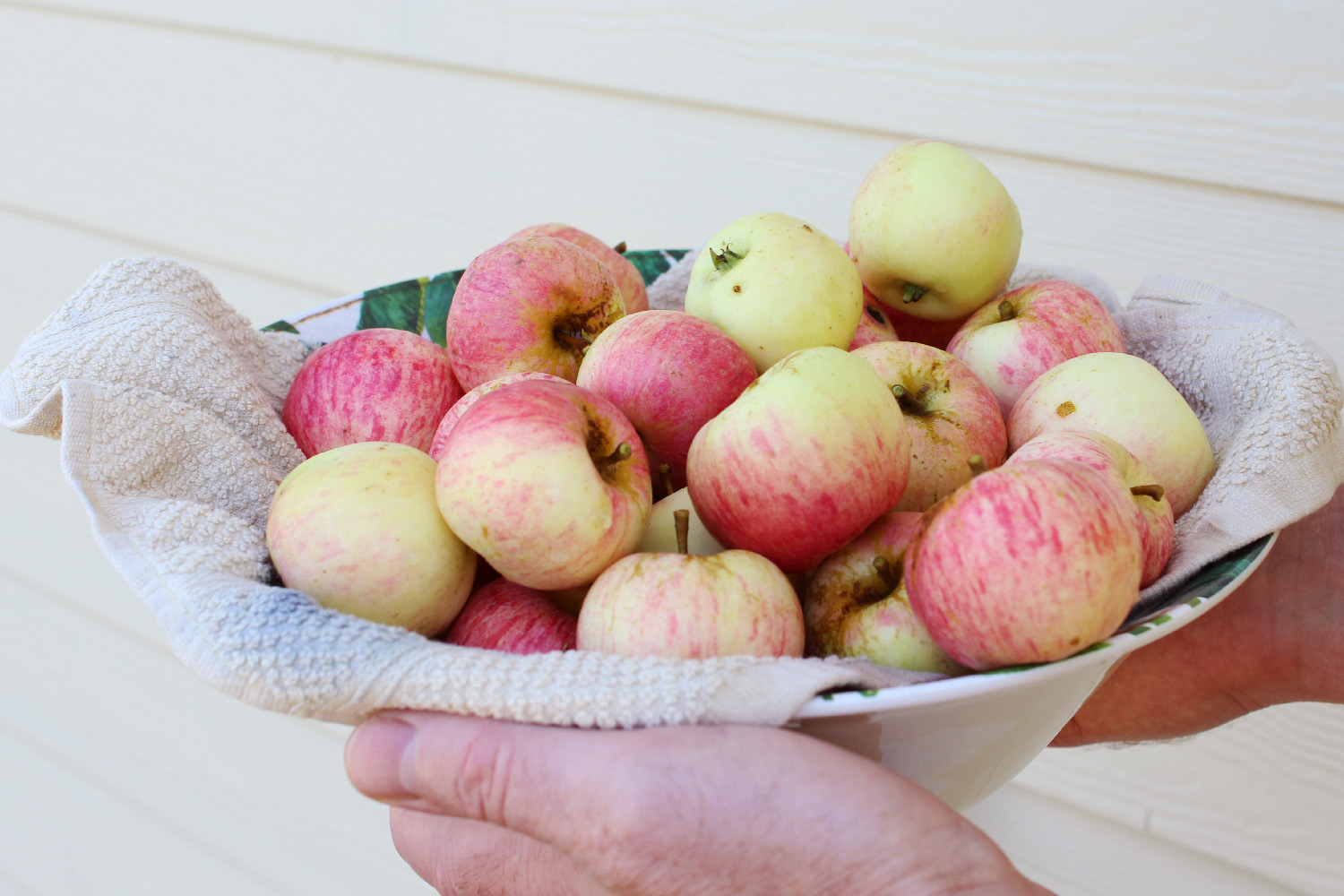
“I’ll only have a few chips”
“I’ll get school supplies early this year”
“I’ll thin those apples later this week”
“I’ll totally remember what variety of apple this is”
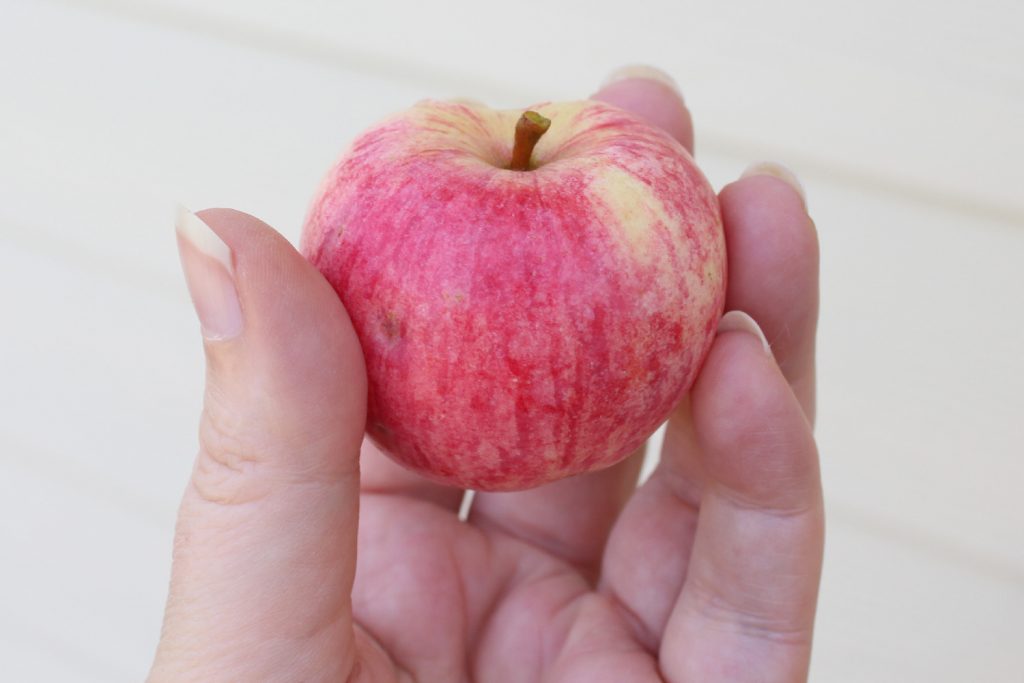
So I have this apple tree. We call it the FrankenApple now, because after seven years of nothing at all, followed by three years of it flowering but not setting fruit, I decided it wasn’t a good apple for our location, and used it to experiment with grafting techniques. I grafted over somewhere between a third and half of the branches, all with different things. Of course, this year, the original tree decided to make apples.
The apples themselves are really quite nice. They are fairly large, and juicy, and reasonably sweet, for a Prairie apple. Unfortunately, I can’t tell you what kind they are, because I was * certain * that I would be able to remember what I planted, and where. I’m pretty sure it’s on Bud 118 rootstock, because the tree is maybe 12 feet tall, at 13 (or so) years of age. Could be Bud 9, though. It’s not like I’ve ever pruned it heavily.
I have this other apple tree. We call it “The Mac”. It is absolutely not a Macintosh apple – those are not hardy here, and I am certain I have never ordered or planted one. But one of our kids took it to school for an apple tasting day, and when the teacher asked what kind of apple it was, the kid said, honestly, ‘We don’t know’. The teacher (without asking any further questions or trying to clarify) assumed the kid forgot, and confidently labeled it a Macintosh. Kiddo was quite offended that the teacher did not believe them. It’s a running joke now.
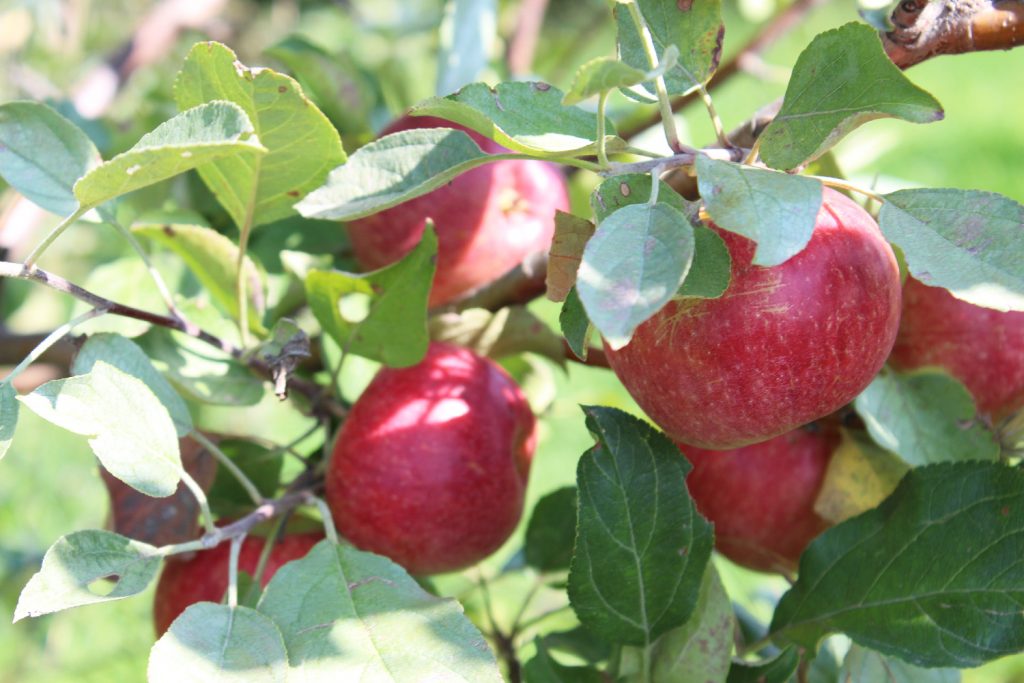
And then there’s the “Honeycrisp”. I put that in quotations, because I’m not actually sure it’s a Honeycrisp at all. That one is not my fault, though. It came to me labeled as a Honeycrisp, and I actually wrote that one down – yay me! But the tree itself doesn’t act like a Honeycrisp. They are not actually supposed to be quite hardy here, but this tree has survived to the tips, even in very cold winters, on my acreage. The apples are not very sweet, even if we have a late fall and we harvest at the end of September. And even when I thin them, the apples are not very big, though they do seem to keep fairly well. We call the tree “The Honeycrisp” anyhow, because I don’t really know what else to call it. It’s great for making applesauce, at least, especially since the apples aren’t ripe until after the weather is nice and cool, and I’m okay with spending the day heating up the house with canning.
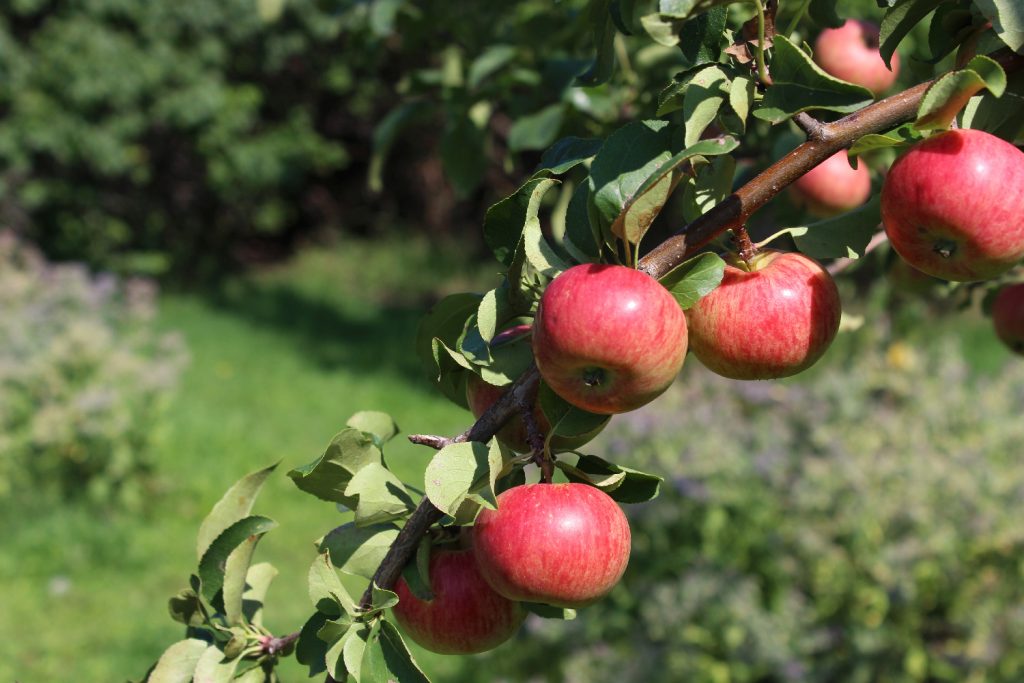
Those trees were all planted between 10 and 13 years ago. I’m wiser now. I try to keep the tree tags, because it’s nice to know both the rootstock and the scion name. I draw maps of what I planted where, and sometimes even update them when we dig out a dead tree and plant something else in its spot. Knowing what kind of tree you have tells you when to start thinking about harvest, what the best uses for the fruit are (canning? pies? cider? long keeping?), and what diseases to watch out for.
I really recommend making yourself a map, even if you tag the trees in some way. I’ve tried to label trees (and grafts) in a variety of ways, from leaving the original plastic tags (loosely) on, to labeled stakes, to adding tags of my own, held on by wire. But between kids, dogs, and weather, almost all of my markers have gone missing eventually. Maybe I have especially bad luck. But anyways, draw a map.
I fully expect that a hundred years from now, some nursery will be selling an apple labeled “Jessie’s Franken” or some such. It’s quite a nice hardy apple. Too bad I can’t recommend it to anyone else!
